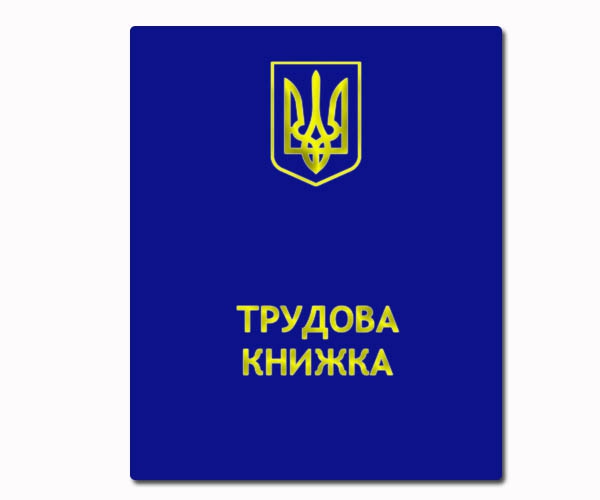A work book is a document that for several decades has retained key importance in terms of procedures for registering a person for work. Largely due to its high importance, the legislator issued several legal acts at once that regulate how books should be kept and filled out.

How to correctly implement both of these? Is there an evolution of legislation in this direction? What are the features of using the official document this year, which is the instruction for filling out work books (2014)? Russia, as you know, is a country with frequently changing legal acts in various fields.
History reference
The briefing on filling out books in Russia is issued at the federal level. The form, procedures for maintaining and storing such a document as a work book are referred, according to the norms of the Labor Code of the Russian Federation, to the competence of the Government of Russia. Next, we will consider the essence of legal acts issued by this executive body in more detail (in fact, they will be the main source of information for us), but for now - a short historical digression.
Labor books of the Russian, new, model (replacing the Soviet ones) were introduced only in the early 2000s. Prior to this, the rules by which they were maintained and stored were enshrined (think only!) In the Decree of the Council of Ministers of September 6, 1973. Also, this document was supplemented by special instructions, mandatory for use in Soviet enterprises. It was published by the State Labor Committee on June 20, 1974. According to a number of researchers, the Soviet legacy is traced not only in Russia. Countries where there is a similar instruction to fill in labor books similar to ours are Ukraine, Belarus.

In 2003, however, Russian legislation underwent significant changes. Instead of sources of law adopted back in Soviet times, the Russian government issued new acts reflecting the realities of the modern structure of the economy. By that time, the Labor Code itself had also been updated.
Main source of law
Instructions for filling out work books used by Russian employers have, as we have said, a fully official status. It is enshrined in the corresponding document published by the Government of the Russian Federation - "On Labor Books", as well as in a special resolution of the Ministry of Labor of the Russian Federation. The first document was approved on April 16, 2003, but after its entry into force, it underwent a number of changes within separate editions. The second legal act, which, in fact, sets out instructions for filling out work books, dated 10.10.2003, 69 FZ, according to the official register. Consider the main extracts from these laws.
Laws have not changed?
Many personnel specialists ask themselves: “Has nothing changed in the field of regulation of work with labor books for more than 10 years since the adoption of the above legal acts?” Yes, all the facts indicate that the instruction for filling out work books of 2014, which appears in the latest issues of personnel media, online sources, has no significant innovations in comparison with the one that operated in 2003. Some experts believe that this is due to the relative simplicity and consistency of the regulations laid down by the Government in the early 2000s.

The year that gave experts an occasion to talk about some adjustments in such a document as instructions for filling out work books is 2013.The fact is that on September 1 of this year, the new Federal Law "On Education" came into force. According to him, the forms of training at universities and some secondary schools have changed significantly. In particular, such concepts as “undergraduate” and “master” were enshrined in law.
Only in the year when 10 years have passed since the instruction on filling out work books (2013) appeared, the template for filling out the main personnel document has changed. Thus, it became necessary, in the section "On Education" to enter the correct names of the corresponding forms of education.
But in general, both in the past and in the current year (to think only how many years the instructions for filling out work books have been in force!), In 2014, the work of HR managers and personnel officers is actually in full compliance with the requirements established back in 2003.
What is prescribed by the Ordinance "On work books"
According to the first of the two legal acts mentioned above, work with labor books is reduced to compliance by employers with a number of general provisions. The Decree also reflects the algorithm for the correct maintenance of the document used in official employment.
Among the useful excerpts of this legal act:
- employment record - the main official document for employees;
- the employing company is obliged to keep a book for each employee who has been working in it for more than five days (provided that this is the main place a person carries out labor activities);
- information about the employee, the nature of the functions that he performs in the company, information on the movement between organizations, dismissals, awards are recorded in the document in question;
- the work book can be kept in Russian or, if it is used by an employer registered in one of the national republics, in the second state language of the subject of the Federation;
- the employer must, upon the written request of the employee, within three days, transmit a copy of the work book or an extract from it, which is correctly certified.
In the Act "On Workbooks" published by the Government, as we have already said, the algorithms for maintaining this document are described in detail. However, in this case, we are interested in instructions for filling out work books, approved by the Decree of the Ministry of Labor of Russia of 10.10.2003. 69 is its serial number. According to this normative act, the employer receives a manual, according to which he is obliged to fill out books, inserts in them, as well as duplicates of this kind of document.
How and what to write
The official instructions for filling out work books require the employing company to record dates with a pen (gel type or pen, roller, ball). Words in the document should be complete, without abbreviations. You can not, for example, write "distribution." as short for "disposal."
If we are talking about such a section where information about the person’s work places is indicated, then it is impossible to cross out or correct any data (if, for example, they were entered incorrectly). If something needs to be changed in what is written, then all that needs to be done is to enter a new line at the bottom of the page with the serial number and date into which to enter (in column 3): "The entry for the number (indicate it) is invalid."
Then immediately add the correct wording reflecting the person’s acceptance to the position, and in column 4, the grounds for amendments (this may be, for example, the date and number of the employer's order). In a similar way, correcting incorrect information about layoffs, movements between employing companies is carried out.
The instructions for filling out work books also require employers to issue employees, upon written request, a duplicate of the relevant document, in which false information will be missing. True, in this case, the work book will contain an inscription of the form "duplicate" on the first page.
A “legal copy” of a document, by the way, like its original, has its own serial number.
Entering personal information in a book
Let us consider how the instructions for filling out work books require employers to enter data on employed employees in the corresponding document.
As for the full name, they are mandatory fixed completely, without any abbreviations and the use of initials.

You can enter information about the education received by the employee (in any type of educational institution - school, lyceum, university) only if there is an original or a certified copy of a diploma, certificate (or other similar document) in an appropriate way.
If the new employee studied somewhere, but did not graduate, then the corresponding entry can be made if some document showing the stages of training (student ID card, or, for example, "record", or copies thereof) is shown.
Similar rules - regarding the profession, specialty, qualification. Everything must be confirmed by documents - in the original or in the form of duly certified copies.
We do not forget, of course, about the year in which amendments were made to the Federal Law "On Education", according to which in practice the instruction for filling out work books has slightly changed (2013). Corrections or new data introduced by personnel officers, if the diploma of a new employee says "undergraduate" or "master's degree", should be correct in relation to the wording of the profile legal act.
Changing the name (for example, after the employee has entered into marriage) is recorded on the first page of the work book. Previous information can be crossed out with one line and immediately enter the correct data. At the same time, on the cover of the book (its inner side), you need to indicate on the basis of what documents the changes are made.
Fill in the work information
What kind of instructions regarding making entries in the "Information about the work" section contains instructions for filling out work books dated 10.10.2003 (69 Regulation of the Ministry of Labor)?
It is important that in the 3rd column the full name of the employing company is always indicated (and if any, then abbreviated). To the right of this entry is the date when the person went to work in a new place, to the left - the serial number of the line.
If an employee in the process of carrying out activities in the organization transferred from one position to another, this should also be recorded in this section. In this case, the 3rd column indicates the name of the department or other structure within the employing company, as well as how the position or new profession sounds.
In both cases, as noted above, it is necessary to indicate the basis for making the relevant entries, each time in column 4. As a rule, the date and number of the order or order is written, according to which a person is hired (or moves from one post to another).
We fix a part-time job
According to the requirements, which contains instructions for filling out work books (and inserts for them, by the way), information about other places of work of a person is entered into the corresponding document at his request. It is only necessary to show the main company-employer a paper confirming the performance of part-time labor functions.
Information is recorded in the "Information about the work." A new serial number of the line is put, in the 2nd column the date is recorded when the person began to work part-time, in the 3rd column there is a record of the company in which he began to work, position. The 4th column reflects links to documents that give reason to enter information about an additional place for a person to perform labor functions.

It is worth noting that combining and combining are not the same thing. The first implies that a person works for a company-employer, which is, firstly, another legal entity, and secondly,performs its labor functions in another office (this is the most common interpretation of the term "part-time" among Russian lawyers). In turn, combination is work in two or more positions in one company. Therefore, HR specialists, filling out the employment book of an employee, should keep in mind that there is such a nuance.
Award - officially
An interesting fact is that information about the rewarding of an employee (for example, diplomas) should also be reflected in the work book. There is a special section for this. It is called - "Information about the award." Its structure is also represented by 4 graphs. The principle of filling each of them is similar to the algorithms for "Information on the job" - first, the serial number, then - the date of the award, after - the description of the award and the name of the document that gives reason to make the corresponding entry in the book.
Leave the letter of the law
If a person quits, then this fact must also be correctly recorded in the work book. To do this, you need to make an appropriate entry in the document, reflecting, as a rule, the termination of the contract between the employee and the employing company. The algorithm of its introduction will probably seem familiar to us - it also consists of sequential work with 4 graphs. In the first one, the line number is written, in the second - the date of dismissal, in the third the reason for the termination of the employment contract is indicated, and in the fourth the information on the documents giving the basis for making the corresponding entry in the workbook is indicated (as a rule, this is the order of the head).
On what grounds can employees be dismissed? Quite often, employees of Russian companies are relieved of their posts on the basis of such a formal basis as “layoffs”. This term, meanwhile, was widely popular already in 2003, when the very legal acts regulating the work with books were issued.
At the same time, the rules remained relevant for the year that marked a decade of reforms in labor legislation, when acts appeared that contained instructions for filling out work books (2013). With examples layoffs to reduce states, Russian personnel officers are still dealing, despite the "progressiveness" of legislation in many areas.
Dismissal "by agreement of the parties" does not lose its relevance. That in 2003, that now this formulation was used by personnel officers regularly. However, today, and, for example, in the year that marked the tenth anniversary of the adoption of the Decree, which sets out instructions for filling out work books (2013), a brief summary of the briefing on the correct execution of the dismissal is a very necessary source. Therefore, we will outline how to enter the relevant data in the book on the two noted grounds for termination of activity.
If we are talking about "staff reduction", then in column number 2 we write the last day worked by the dismissed employee in the company. In the third column, the wording will be unchanged: "dismissed to reduce staff." It should be supplemented by the phrase: "paragraph 2 Article 81 of the Labor Code Russian Federation".
“Dismissal by layoffs” is relevant for both 2003 and the year that marked 10 years from the moment when the instruction on filling out work books was adopted (2013), a sample wording. There is no need to be afraid, experts say, following instructions from a decade ago. The term "layoff" was then understood, and is now understood in exactly the same way.
If a person is dismissed by agreement of the parties, then we write the following: "dismissed by agreement of the parties", referring to the same paragraph 1 Article 77 of the Labor Code of the Russian Federation. By the way, there is another option, it is quite correct and often practiced. Namely: "dismissed of his own free will." This basis, in turn, is written with reference to the 3rd paragraph of Art. 77.
Work with a duplicate, insert
As we said above, in some cases, the employee may request a duplicate of the work book from the personnel officers. This rule was established in 2003, it did not disappear in the year, which marked the 10 years that have passed since the "federal" instruction for filling out work books appeared (2013). Workbook insert By the way, this is another important and demanded, along with a duplicate, additional document. We will also learn how to work with him today.
First, how to fill out the duplicate correctly.
If the hired employee already has work experience, then it is necessary to somehow fix the duration of his working experience. This is done in the column of the 3rd section, where information about the work is indicated. The length of service is recorded in total in years, months, and also days of work, but without specifying employing companies and positions. However, you still need to "decrypt" the data, while having documents confirming the work there. In each new line the name of the previous employing companies, positions, terms of performance of labor functions are indicated.
Now about the liner. This item is added to the workbook if all pages in any of the sections are full. The insert structure is completely identical to the main document. The rules for filling are exactly the same. It is important to know that without a work book it is not valid. The insert, meanwhile, is the same official document. It is made on a special form with anti-counterfeit elements. Employers are required by law to have a sufficient number of blank forms (as well as blank sample work books).
Bilingual officialdom
We said above that when registering employees with employers registered in the national republics, the data in the books are indicated not only in Russian, but also in the language of the subject of the Federation. The main requirement here is the uniform appearance (filling style, ink color, etc.) of the records. The semantic content of information in Russian and in the national language of the republics should completely coincide. Some lawyers say that it is necessary to fill out the information in both dialects with one cadre specialist, so that the handwriting is the same.
The structure and basic rules for working with such a document as an instruction for filling out a work book are approximately the same. 2013 is the year when the algorithm for making entries outlined in it was supplemented by formulations from related sources of federal law. However, in general, the rules established by the Government of the Russian Federation in 2003 remain relevant to this day.
Of course, we were not faced with the task of reflecting the evolution of laws relating to work with work books, the results of which would take place in a year that marks 10 years from the moment such a source of law as instructions for filling out work books appeared (2013). In the pictures and diagrams, its key provisions, as required in the study of many other legislative acts, are probably also impractical to display. But we were convinced of the simplicity and consistency of the requirements set forth in the Resolutions of the Government of the Russian Federation and its departments. And therefore, modern personnel officers should not have difficulties in working with work books.
